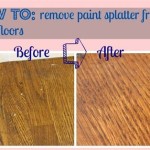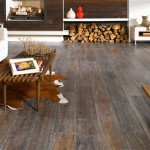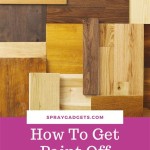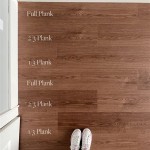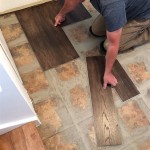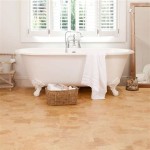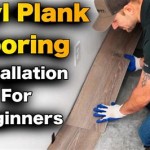Will Double-Sided Carpet Tape Damage Hardwood Floors?
Hardwood floors are a desirable feature in many homes, offering a blend of elegance, durability, and relatively easy maintenance. Protecting their integrity is paramount for homeowners. One common scenario arises when attempting to secure area rugs or carpets to these floors. Double-sided carpet tape appears to be a convenient solution, offering a quick and seemingly simple method for preventing slips and keeping rugs in place. However, the question remains: will using double-sided carpet tape damage hardwood floors? The answer is not a straightforward yes or no, and depends on several factors, including the type of tape used, the floor's finish, the duration of application, and the removal process.
The core function of double-sided carpet tape is its adhesive properties. This adhesive bonds to both the underside of the rug and the surface of the hardwood floor. While designed for carpet, the strength of this bond can pose risks to hardwood finishes, especially if the tape is left in place for extended periods. The adhesive can react with certain types of floor finishes, causing discoloration, peeling, or a sticky residue that is difficult to remove.
Understanding the potential risks and implementing preventative measures is crucial for homeowners considering using double-sided carpet tape on hardwood floors. This article will delve into the specific factors that contribute to damage, different types of carpet tape, and best practices for application and removal to mitigate these risks.
Understanding the Mechanisms of Potential Damage
Several mechanisms can lead to damage when double-sided carpet tape is applied to hardwood floors. The primary concern revolves around the interaction between the tape's adhesive and the floor's finish. Many hardwood floors are treated with polyurethane, varnish, or wax finishes to protect the wood and enhance its appearance. These finishes, while durable, are susceptible to chemical reactions and physical stress.
The adhesive in double-sided carpet tape often contains solvents or chemicals that can soften, dissolve, or otherwise react with the floor finish. This reaction can lead to discoloration, where the area under the tape appears lighter or darker than the surrounding floor. In more severe cases, the finish can become brittle or peel away entirely when the tape is removed, leaving behind a damaged surface that requires refinishing.
Another potential issue is the residue left behind after tape removal. Even if the adhesive does not directly react with the finish, it can leave a sticky layer that attracts dirt and debris. This residue can be exceptionally difficult to remove, requiring specialized cleaning solutions and techniques. Attempting to remove the residue with harsh chemicals or abrasive tools can further damage the floor.
The duration of the tape's application also plays a significant role. The longer the tape remains on the floor, the greater the chance of a chemical reaction or the adhesive bonding too strongly to the finish. Prolonged exposure to pressure and temperature fluctuations can exacerbate these effects, making removal more difficult and increasing the likelihood of damage.
Finally, the type of backing material used in the tape can also contribute to damage. Some tapes use a cloth or paper backing that can become embedded in the floor's finish, making removal even more challenging. When attempting to peel off the tape, the backing material may tear, leaving small fragments that are difficult to extract, further increasing the effort required for cleanup and the potential for scratching the floor surface.
Types of Double-Sided Carpet Tape and Their Impact
Not all double-sided carpet tapes are created equal. Different types of tapes utilize varying adhesives and backing materials, each presenting a different level of risk to hardwood floors. Understanding these distinctions is essential for making informed choices.
Traditional double-sided carpet tape often employs a strong, permanent adhesive designed for securing carpets to various surfaces, including concrete and subflooring. This type of tape is generally the most aggressive and poses the highest risk of damage to hardwood floors. While it offers a robust hold, the adhesive's strength makes it difficult to remove without pulling up the floor’s finish.
Residue-free or "removable" carpet tapes are marketed as a safer alternative for delicate surfaces. These tapes use a less aggressive adhesive that is designed to release cleanly from surfaces without leaving residue or causing damage. While these tapes are generally milder than traditional tapes, it's important to note that "removable" does not guarantee complete safety. The effectiveness of these tapes depends on the floor's finish, the duration of application, and the removal technique.
Specialty carpet tapes designed specifically for hardwood floors are also available. These tapes often feature a thinner adhesive layer and a backing material that is less likely to leave residue. They may also be formulated with a pH-neutral adhesive to minimize the risk of chemical reactions with the floor finish. However, these specialty tapes can be more expensive and may not offer the same level of holding power as traditional carpet tape.
The backing material of the tape also plays a crucial role. Tapes with a cloth or fiber-reinforced backing can be more difficult to remove cleanly, as the fibers can become embedded in the floor's finish. Tapes with a clear or plastic backing are generally easier to remove but may still leave behind adhesive residue if not handled carefully.
When selecting double-sided carpet tape for hardwood floors, it is always advisable to test the tape in an inconspicuous area first. Apply a small piece of tape to an area under a piece of furniture or in a closet and leave it for a few days. Then, carefully remove the tape and check for any signs of damage or residue. This test will help determine if the tape is compatible with the floor's finish and minimize the risk of widespread damage.
Best Practices for Application and Removal to Minimize Damage
Even with careful selection of carpet tape, proper application and removal techniques are essential to minimize the risk of damage to hardwood floors. Following these best practices can significantly reduce the likelihood of problems.
Before applying any tape, thoroughly clean the hardwood floor surface. Remove any dirt, dust, or debris that could interfere with the tape's adhesion or scratch the floor during application or removal. Use a pH-neutral floor cleaner specifically designed for hardwood floors and allow the surface to dry completely before applying the tape.
Apply the tape sparingly. Use only the amount necessary to secure the rug or carpet in place. Avoid applying large strips of tape across the entire rug, as this will increase the surface area in contact with the floor and elevate the potential for damage. Instead, use smaller pieces strategically placed around the perimeter of the rug and in areas prone to slipping.
Consider using rug pads instead of relying solely on carpet tape. Rug pads provide cushioning, prevent slipping, and protect the floor from scratches and wear. In many cases, a quality rug pad can eliminate the need for carpet tape altogether.
When it comes time to remove the tape, do so slowly and carefully. Avoid pulling the tape forcefully, as this can cause the finish to peel away. Instead, gently lift a corner of the tape and slowly peel it back, applying steady, even pressure. If the tape is difficult to remove, try using a hairdryer to gently heat the adhesive. The heat will soften the adhesive and make it easier to peel away without causing damage.
If any adhesive residue remains after removing the tape, do not use harsh chemicals or abrasive cleaners to remove it. Instead, try using a mild solvent such as mineral spirits or WD-40. Apply the solvent to a clean cloth and gently rub the affected area. Always test the solvent in an inconspicuous area first to ensure it does not damage the floor’s finish. Once the residue is removed, clean the area with a pH-neutral floor cleaner to remove any remaining solvent.
Finally, after removing the tape, inspect the floor for any signs of damage. If you notice any discoloration, peeling, or scratching, consult with a professional floor refinisher. They can assess the damage and recommend the appropriate course of action, whether it's spot repair or a full refinishing of the floor.

Will Double Sided Carpet Tape Damage My Hardwood Floor Tile By All Flooring Now

Pros And Cons Of Applying Rug Tape On Your Floors Carpets Rugpadusa

Will Double Sided Carpet Tile Tape Leave A Sticky Residue Or Damage My Floor

Have A Question About Roberts Indoor Or Outdoor 15 Ft Double Sided Carpet Tape Roll Pg 1 The Home

Double Sided Carpet Tape On Hardwood Floor Test Carpettape Doublesidedtape Rugs Ruggable

How To Remove Double Sided Carpet Tape On Linoleum Kitchen Floor Hometalk

Types Features And Specific Uses Of Carpet Tape

Easy Ways To Get Rid Of Carpet Tape On Wooden Floors Or Stairs Floor Sanding

Safetypro 2inch X 20yd Non Slip Backing Double Sided Carpet Tape 11 9 Oz

Xfasten Premium Carpet Tape 2 X 5 Yards Residue Free Rug Adhesive For Hardwood Concrete Tiles More
See Also
